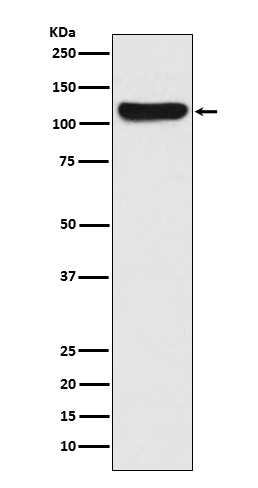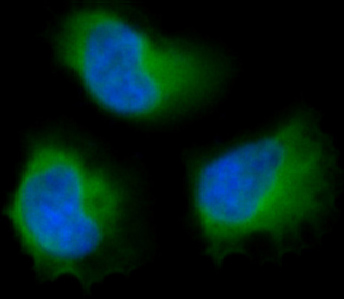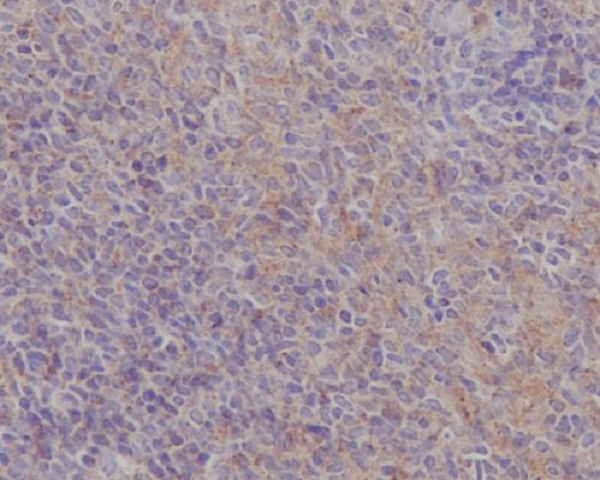


| WB | 1/500-1/1000 | Human,Mouse,Rat |
| IF | 1/20 | Human,Mouse,Rat |
| IHC | 1/50-1/100 | Human,Mouse,Rat |
| ICC | 1/50-1/200 | Human,Mouse,Rat |
| FCM | 1/50-1/100 | Human,Mouse,Rat |
| Elisa | 咨询技术 | Human,Mouse,Rat |
| Aliases | PTK2; FAK; FAK1; Focal adhesion kinase 1; FADK 1; Focal adhesion kinase-related nonkinase; FRNK; Protein phosphatase 1 regulatory subunit 71; PPP1R71; Protein-tyrosine kinase 2; p125FAK; pp125FAK |
| Entrez GeneID | 5747 |
| WB Predicted band size | Calculated MW: 119 kDa; Observed MW: 119 kDa |
| Host/Isotype | Rabbit IgG |
| Antibody Type | Primary antibody |
| Storage | Store at 4°C short term. Aliquot and store at -20°C long term. Avoid freeze/thaw cycles. |
| Species Reactivity | Human,Mouse,Rat |
| Immunogen | A synthesized peptide derived from human FAK |
| Formulation | Purified antibody in PBS with 0.05% sodium azide. |
+ +
以下是3-4条关于FAK抗体的参考文献,包含文献名称、作者及摘要内容的简要概括:
---
1. **文献名称**:*Focal adhesion kinase signaling in cancer*
**作者**:Schlaepfer DD, Mitra SK
**摘要**:综述了FAK在肿瘤发生中的作用,包括其在细胞迁移、增殖和存活中的信号传导机制,并讨论了FAK抗体在抑制肿瘤生长和转移研究中的应用。
---
2. **文献名称**:*Focal adhesion kinase: a regulator of focal adhesion dynamics and cell movement*
**作者**:Mitra SK, Hanson DA, Schlaepfer DD
**摘要**:探讨FAK如何调控黏着斑动态及细胞迁移,通过FAK抗体阻断实验揭示其在整合素信号通路中的关键作用,为癌症治疗提供潜在靶点。
---
3. **文献名称**:*FAK in cancer: mechanistic findings and clinical applications*
**作者**:Sulzmaier FJ, Jean C, Schlaepfer DD
**摘要**:总结了FAK在肿瘤微环境中的促癌机制,包括对侵袭、血管生成的影响,并利用FAK抗体验证其在临床前模型中的治疗潜力。
---
4. **文献名称**:*Targeting FAK in anticancer combination therapies*
**作者**:Cheng Y, et al.
**摘要**:研究FAK抑制剂与化疗/免疫治疗的协同效应,通过FAK抗体检测蛋白表达水平,证明联合治疗可显著抑制肿瘤进展。
---
**注**:以上文献摘要基于FAK相关研究的经典主题概括,实际文献内容可能更详细,建议通过学术数据库(如PubMed)检索具体文章以获取完整信息。
Focal adhesion kinase (FAK), encoded by the *PTK2* gene, is a non-receptor cytoplasmic tyrosine kinase critical for regulating cell adhesion, migration, and survival. Discovered in the early 1990s, FAK localizes to focal adhesions—dynamic structures linking the extracellular matrix (ECM) to the cytoskeleton. It integrates signals from integrins, growth factor receptors, and mechanical cues to coordinate cellular responses. FAK contains an N-terminal FERM domain, a central kinase domain, and a C-terminal focal adhesion targeting (FAT) domain. Activation occurs via autophosphorylation at Tyr397 upon integrin clustering or receptor tyrosine kinase stimulation, creating a docking site for Src-family kinases. This initiates downstream signaling cascades (e.g., PI3K/AKT, MAPK) influencing cell motility, proliferation, and survival.
FAK antibodies are essential tools for studying its expression, activation, and localization in physiological and pathological contexts. They enable detection of total FAK, phosphorylated isoforms (e.g., pTyr397), and interactions with binding partners (e.g., paxillin, talin) via techniques like Western blot, immunofluorescence, and immunoprecipitation. Dysregulated FAK signaling is implicated in cancer metastasis, fibrosis, and cardiovascular diseases, driving interest in FAK-targeted therapies. Specific antibodies help validate FAK inhibition in drug development and elucidate its role in tumor microenvironment remodeling, epithelial-mesenchymal transition (EMT), and stemness. Standardized antibody validation remains crucial due to cross-reactivity concerns with homologous kinases like PYK2.
×